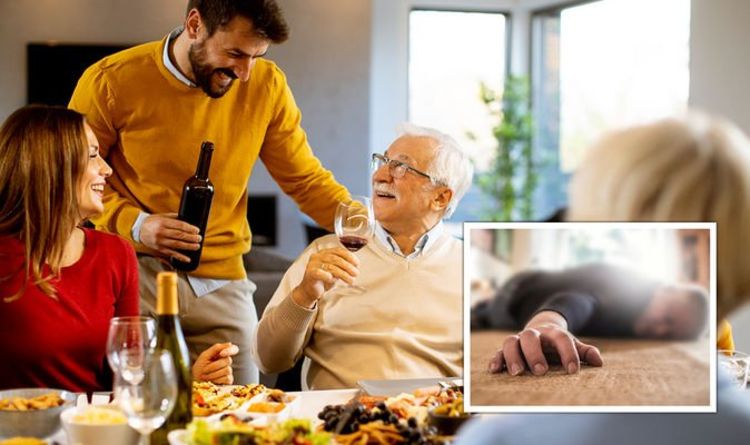High blood pressure: Lifestyle changes to reduce reading
We use your sign-up to provide content in ways you’ve consented to and to improve our understanding of you. This may include adverts from us and 3rd parties based on our understanding. You can unsubscribe at any time. More info
Hypoglycaemia describes low blood sugar, below 4mmol/l; the drop in your reading can occur when the balance between your diabetes medications, what you consume, and how much you move is not balanced. Diabetes UK warned: “A hypo [short for hypoglycaemia] can happen quickly. So it’s important you know what the signs are and what to do if you are having a hypo.” The most common symptoms of low blood sugar include feeling shaky, disorientated, and anxious.
Other signs may be feeling disorientated, irritated, and feeling hungry. There can be physiological side effects too.
Such effects could involve: sweating; heart palpitations; a fast pulse; headaches and night sweats.
Low blood sugar may also lead to a lack of concentration, tiredness, feeling tearful, blurred vision, and lips feeling tingly.
A diabetic is more likely to experience a hypo if they drink alcohol on an empty stomach.

Diabetes UK stated: “If you use insulin or some other diabetes medications like sulphonylureas, you’re [also] more likely to have a hypo.
“Drinking alcohol can then add to this, because alcohol reduces your body’s ability to recover when blood sugar levels are dropping.”
The organisation explained that the liver usually stores extra glucose, which is released into the blood when needed.
However, the consumption of alcohol can stand in the liver’s ability to do this effectively.
Diabetes UK warned: “Your risk of having a hypo doesn’t go away after you stop drinking – it increases, and can last up to 24 hours.”
Moreover, it is not uncommon for people to mistake having a hypo for being drunk.
It is for this reason that you are advised to carry hypo treatments around with you.
Hypo treatments can include:
- Five glucose or dextrose tablets
- Five jelly babies
- A small glass of a sugary (non-diet) drink
- A small carton of pure fruit juice
- Two tubes of a glucose gel such as GlucoGel.

If you are unaware whether your diabetes medication can cause hypos, or if it’s affected by alcohol, it’s best to speak to your doctor.
Your healthcare team can also advise you on how much hypo treatments to take, specific to your needs, if applicable.
Any sign of a hypo needs to be addressed immediately, as it can lead to confusion and drowsiness.
Furthermore, a person experiencing a hypo could become unconscious or have a fit.

“After a hypo, you may need to eat or drink a bit more. This is to stop your sugar levels going down again,” Diabetes UK stated.
Examples of what to eat includes a sandwich, or piece of fruit, a bowl of cereal, or a glass of milk.
Other causes of a hypo can include missing or delaying a meal or snack, not having enough carbohydrates in your last meal, or doing a lot of exercise without consuming extra carbohydrates.
“Insulin and some other diabetes medications can make you more likely to have a hypo,” Diabetes UK stated.
Source: Read Full Article
